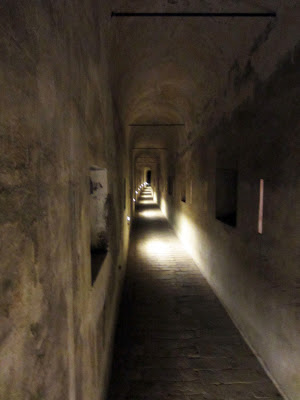A few pictures I took at the Archivio di Stato (the State archives in Rome) to give an idea of some of the documents I had to look through for my research. Mostly I was looking at handwritten payment records from the sixteenth century. It's fun leafing through old things!
How documents are arranged and packaged varies immensely. This fondo is large, but not exceptional. Sometimes these things are incredibly difficult to handle because of their size. My computer is there to give an idea of the scale of this monster.
A more civilized bound fondo. Here I'm looking at payment records. It's incredibly dull reading, but super important to contextualize artistic commissions.
Close up of more payment records. The second paragraph starts with "A m: Gio anto da Varese pittore...," beginning a description of the work produced by and the payment given to one of the painters of my ceiling, Giovanni Antonio [Vanosino] da Varese.
Not only is sixteenth-century Italian different from contemporary vernacular, but handwriting can often be difficult to decipher. Add to that several hundred years of storage and you get a lot of bleeding ink.
Another document, showing tiny handwriting. The last paragraph on this page is an eighteenth-century description of the decoration in the Sala Bologna.
Another contract for Vanosino, translating roughly to "I, Giovanni Antonio Vanosino da Varese, confirm that I have received the pre-written models for the world maps." Then "On the order of Monsignor Mercurio Raimondo, as above and by faith, written in his own hand." Then signed by Vanosino.






































